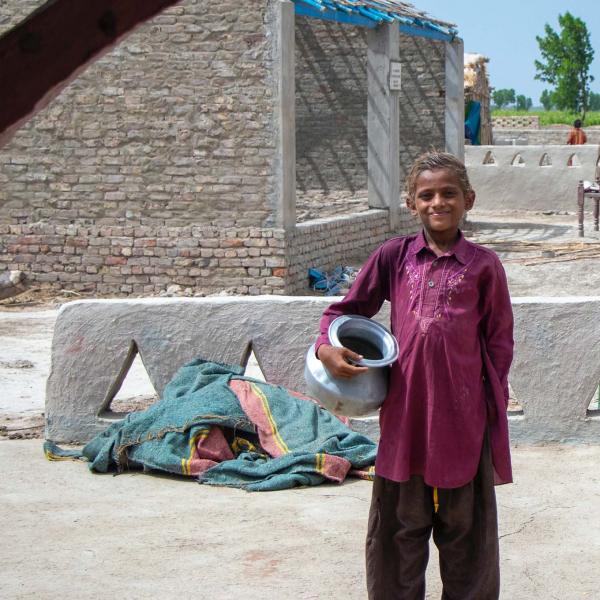It can take a while before policy responds to new realities, in part because it can take time before those new realities are recognised. Policy has nothing like adapted to the collapse in home ownership among the young. We continue to treat pensioners as though they need free travel, winter fuel allowances and the like, despite the fact they are on average now the best-off demographic group in the country. The squeeze on middle earners that started in the early 2000s was barely noticed at the time.
So what are we missing today? Possibly quite a lot. It’s always nice to learn new things, and especially to be surprised by new results when you weren’t expecting them. So it was with a report published last week by the Institute for Fiscal Studies.
Here are some facts. Living standards rose more quickly in the five years from 2011 than in the five years from 2002. Income inequality has been falling since 2008 and is no higher today than it was 30 years ago. After 30 years of getting better and better off relative to the rest of us, pensioners’ incomes stopped rising faster than everyone else’s in about 2011. Persistent periods out of work for men are overwhelmingly associated with poor health, and increasingly with poor mental health, not with unemployment.
The period from 2002 was an awful time for average living standards. Between 2002 and 2007 median incomes rose by only 1.1 per cent a year, not much better than half the rate seen on average over the previous 40 years. After the post recession trough in 2011, incomes grew at 1.6 per cent a year until 2016-17; not great but better than the pre-crisis period. Once you also account for the falls in incomes that followed the recession, the longstanding nature of the crisis in average living standards becomes clear. It is a crisis that looks as if it might have been turning a corner by 2016. Whether that will continue to be the case after the 2017 inflation spike and stalling in real earnings growth remains to be seen.
An important explanation for that growth in average incomes was the very strong growth in employment after 2011. As is I think well known by now that increase in employment has been accompanied by very poor earnings growth. Together these changes have been responsible for something which seems continually to astonish people: falling inequality. This has not been a dramatic fall but after 2008 broadly speaking those towards the bottom of the income distribution have seen their incomes rise by about 1 per cent a year on average, while those towards the top have seen almost no rises.
Perhaps even more striking has been what happened to weekly earnings in the five years after 2011. The lowest earners saw rises of more than 10 per cent in their earnings over that period, while middle earners had increases of only 4 per cent. Top earners got nothing at all. We haven’t seen a compression in earnings inequality like that since the 1970s.
Here’s another fact that may well take you by surprise. It depends which measure you use, but real income growth has meant that the “absolute” measure of child poverty has fallen more since 2012 than it did between 2002 and 2007. That said, as median income has been growing too, using relative poverty measures child poverty is again on the rise and more recently the poorest have suffered from benefit cuts, with more to come. It’s hard to see how that won’t put child poverty on an increasing trend whatever measure you use. But for now the facts are these. In 2007 just over 30 per cent of children were in poverty on current definitions of “absolute” poverty. By 2015 that had fallen to just over 25 per cent.
And in case you are wondering, since 2008 the top 1 per cent seem to have stopped pulling away from the rest. Their income share kept rising until 2008, but not since. While overall income inequality is now very similar to where it was in the late 1980s, the top 1 per cent remain very much richer compared with the rest of us than they were back then.
Something else which seems to have changed around 2012 is the onward march of the pensioners. For more than 20 years up to 2012 their incomes were rising faster than those of the working age population. By 2012 they had incomes, let alone wealth, which were on average slightly higher than those of non pensioners, once housing costs were accounted for. But that upward trend seems to have halted. Relative to the rest of us pensioners were about as well off in 2016 as they were in 2011. That’s now a long enough period of stability not to look like just a blip. Perhaps we have finally reached peak pensioner.
I’ll end on an issue which gets far too little attention — the plight of those in poor health. Among those without a longstanding illness, long term unemployment is rare. Only about 2 per cent of healthy men aged 25 to 54 have been out of work for three years or more. Those with a longstanding illness are eight times as likely to be long-term workless. The increasing numbers with mental health problems are even more likely to be out of work. Half the mentally ill report material deprivation compared with fewer than one in six of the healthy population.
The 1980s saw hugely increasing inequality, rising rates of poverty and mass unemployment. We are still living with the consequences, but we should not ignore much more recent trends. Of these the increasing numbers of, and poverty among, the mentally ill is perhaps the most urgent to address.
This article was originally published in the Times and is reproduced here with full permission. Paul Johnson is director of the Institute for Fiscal Studies, follow him on Twitter @PJtheEconomist.









